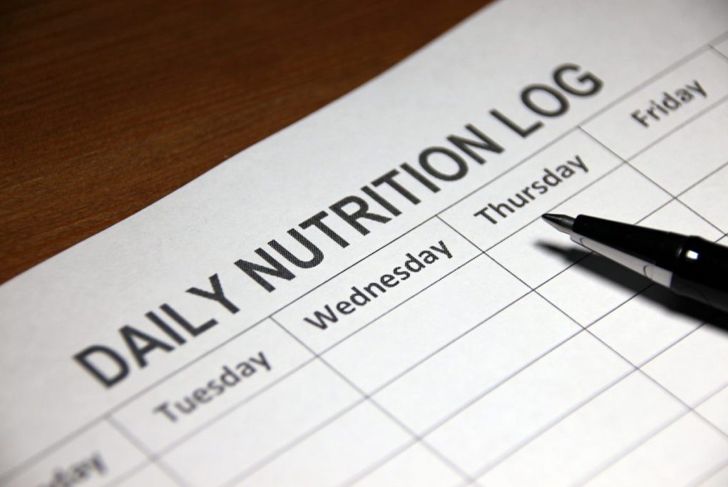If you experience digestive upset after eating certain foods, or if you develop rashes when in contact with various ingredients, your doctor might suggest you follow an elimination diet. If you and your physician suspect that you have gluten or lactose sensitivities, you may be placed on an elimination diet. Issues like enzyme imbalances, decreased physical performance, digestive system problems, and inflammation can all be attributed to a food allergy or sensitivity, and elimination diets can help pinpoint the foods that cause these symptoms.
What Are Your Symptoms?
Different food allergies and sensitivities have different symptoms. Elimination diets are most beneficial when you keep a food log of what you eat and the amounts, as well as your digestion status and any symptoms or anomalies. Symptoms of intolerance to certain proteins, such as gluten or lactose, include gas, bloating, constipation, and diarrhea. You might also experience flare-ups of some immune disorders, such as eczema and rheumatoid arthritis, or migraines. These symptoms often indicate a medical need for a supervised elimination diet. If you simply wish to clear your mind of fog or improve the condition of your skin, then eliminating added sugar or processed food might be more helpful than a medical elimination diet.
Determine the Duration of Your Diet
Elimination diets vary in terms of which foods are permitted and eliminated, but most will cut out all common allergens. These include shellfish, dairy, and wheat, as well as peanuts, corn, alcohol, and eggs. The duration of your diet depends on how many items you’re eliminating. The full elimination portion of the diet can last between three and six weeks. Nutritionists believe that it takes about three weeks for your system to fully eliminate the proteins and allergens. Once you have healed from these allergens, you can begin to reintroduce the eliminated foods one at a time, over the next weeks.
Elimination Diets are Not About Weight Loss
Elimination diets aren’t meant to help you lose weight. They’re different from thirty-day cleanses, or other pared-down fad diets. You may lose weight on an elimination diet simply because you’re not eating excess carbs and processed foods. The goal is to pinpoint, through elimination, food items to which you have sensitivities, and return to a normal regime free of only those foods.
Are You Under a Doctor’s Care?
Your physician or nutritionist will look at the science behind certain symptoms and how different foods affect the body. They will design a meal plan and ingredient list, including a list of foods to cut out. In some cases, the foods you’re eliminating may contain vital nutrients for your body, so it’s always best to follow the doctor’s recommendation for meals and possibly supplements, to avoid vitamin deficiency or malnourishment. Another reason to see a doctor first: the symptoms that prompt you to begin an elimination diet could also indicate something more serious — something of which your doctor should be aware.
Types of Elimination Diets
Medically supervised elimination diets are unique to each individual. One may remove wheat products to determine gluten sensitivity or Celiac disease, while another will eliminate dairy to test for lactose intolerance. Sugar may cause symptoms in one person, so refined sugars, as well as things like corn and alcohol, might be removed from the eating plan. A person suspected of having IBS may need to remove fermentable sugars from their diet. Self-reporting of meal logs and symptoms will help determine your specific diet, as well as the doctor’s knowledge of common culprits.
Journaling Your Consumption
Be prepared to keep a food log and use a symptom tracker before starting the diet, during, and for a period after the diet ends. You’ll list everything you put in your mouth — including beverages and condiments. In addition, you’ll document any symptoms of food intolerance, including the issue, the duration, and details such as the condition of bowel movements. The process is involved, but it’s a tried and true method of diagnosis. Don’t forget to read food labels on processed foods, as they often contain foods you aren’t to consume during the elimination portion.
Your Symptoms May Not Ease
While many people successfully ease many symptoms associated with food allergies and intolerances after following an elimination diet, not all do. In fact, elimination diets are thought to improve symptoms of food intolerance in only about one-third to one-half of patients. This is why it’s especially important to follow an elimination diet under a doctor’s care — if the symptoms that prompted you to seek medical attention are still present after the diet is over, you’ll need to explore other causes.
What Are Some Benefits?
An elimination diet is a useful tool to get to the root of dysfunction in the body. Changing your eating instead of depending on medications can also be more healthy overall. The method is a natural, sustainable approach to easing symptoms of GERD, IBS, or other autoimmune disorders such as rheumatoid arthritis or eczema. You might also discover that you begin incorporating more of the allowed foods even after your diet returns to normal. Some people who finish elimination diets not only find their symptoms alleviated, but have discovered new food preferences, too.
Repeating an Elimination Diet
Food allergies and intolerances can change with age, lifestyle alterations, or pregnancy. Just when you think you have your intolerances pinned down, they can shift, or a new allergy can crop up. On the other hand, some of those who successfully eliminate a trigger food from their diet may find that they’re able to eat other foods that previously caused problems once their gastrointestinal systems heal.
Precautions of Elimination Diets
Be careful when beginning an elimination diet. You might be eliminating entire food groups, such as dairy, eggs, and sugar. While some of these may not be integral to a healthy diet, other eliminated foods contain vital nutrients for a healthy body. Your doctor might recommend supplements or alternatives to these foods to ensure you’re eating a balanced diet. It’s also common to experience cravings, especially if you’re eliminating sugar or cheese from your diet. Finally, there’s always a chance your symptoms will become acuter, or not disappear entirely.

 Home
Home Health
Health Diet & Nutrition
Diet & Nutrition Living Well
Living Well More
More




















